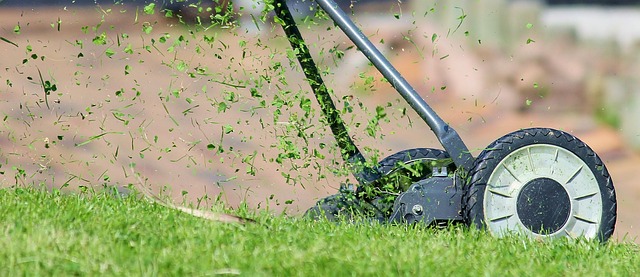Essential Lawn Care Tips for a Healthy Green Yard
Maintaining a beautiful lawn requires understanding the fundamentals of proper care, timing, and technique. From knowing when to fertilize and how frequently to mow, to effectively managing weeds and deciding between DIY maintenance versus professional services, successful lawn care combines knowledge with consistent effort. Whether you're a new homeowner or looking to improve your current lawn care routine, these essential practices will help you achieve the lush, healthy yard you desire.

Essential Lawn Care Tips for a Healthy Green Yard
A well-maintained lawn serves as the foundation of attractive landscaping and enhances your property’s curb appeal. Successful lawn care involves understanding the specific needs of your grass type, local climate conditions, and seasonal requirements. By implementing proven techniques and maintaining a consistent schedule, homeowners can achieve professional-looking results while building valuable knowledge about their outdoor spaces.
When Should You Fertilize Your Lawn
Timing fertilizer application correctly makes the difference between a thriving lawn and one that struggles throughout the growing season. Cool-season grasses like fescue and bluegrass benefit most from fertilization in early fall and late spring when temperatures range between 60-70°F. Warm-season varieties such as Bermuda and Zoysia should receive their primary feeding in late spring through early summer when soil temperatures consistently reach 65°F or higher.
Soil testing provides valuable insights into nutrient deficiencies and pH levels, helping determine the appropriate fertilizer type and application rate. Most lawns require nitrogen-rich fertilizers applied at 1 pound of actual nitrogen per 1,000 square feet annually, though this varies based on grass type and soil conditions.
How Often Should You Mow Your Lawn
Mowing frequency depends on grass growth rate, which fluctuates with temperature, moisture, and fertilization schedules. During peak growing seasons, most lawns require mowing every 5-7 days, while slower growth periods may extend this to 10-14 days. The one-third rule remains fundamental: never remove more than one-third of the grass blade length in a single cutting.
Maintaining proper mowing height strengthens root systems and improves drought tolerance. Cool-season grasses typically perform best at 2.5-3.5 inches, while warm-season varieties thrive at 1-2.5 inches. Sharp mower blades create clean cuts that heal quickly, reducing stress and disease susceptibility.
Effective Weed Control Strategies
Successful weed management combines prevention, early intervention, and targeted treatment approaches. Dense, healthy grass naturally crowds out weeds by competing for sunlight, water, and nutrients. Pre-emergent herbicides applied in early spring prevent annual weeds like crabgrass from germinating, while post-emergent treatments address existing broadleaf weeds.
Cultural practices significantly impact weed pressure. Proper watering, appropriate fertilization, and maintaining optimal mowing heights create conditions favoring grass growth over weed establishment. Hand-pulling weeds after rainfall or irrigation removes them completely, including root systems that chemical treatments might miss.
DIY Versus Professional Lawn Care Services
Choosing between self-maintained and professional lawn care depends on available time, budget considerations, and desired results. DIY approaches offer complete control over products, timing, and techniques while building valuable knowledge about your specific lawn conditions. However, this requires significant time investment, equipment purchases, and ongoing education about best practices.
Professional services provide expertise, specialized equipment, and consistent scheduling that many homeowners find valuable. Licensed applicators understand local regulations, proper chemical handling, and can diagnose problems that inexperienced homeowners might miss. The decision often comes down to balancing cost considerations against time availability and desired outcomes.
| Service Type | Provider | Monthly Cost Estimation |
|---|---|---|
| Full-Service Professional | TruGreen | $50-$100 |
| Full-Service Professional | Scotts LawnService | $45-$95 |
| Basic Treatment Only | Local Companies | $30-$70 |
| DIY Approach | Self-Maintained | $15-$40 |
Prices, rates, or cost estimates mentioned in this article are based on the latest available information but may change over time. Independent research is advised before making financial decisions.
Seasonal Lawn Care Maintenance
Seasonal adjustments ensure your lawn receives appropriate care throughout the year. Spring preparation includes dethatching, overseeding thin areas, and beginning regular fertilization schedules. Summer maintenance focuses on proper watering techniques, pest monitoring, and adjusting mowing heights to combat heat stress.
Fall activities prepare lawns for winter dormancy through final fertilization, leaf removal, and gradual reduction in mowing frequency. Winter care varies by region but generally involves protecting grass from traffic damage and planning for the upcoming growing season.
Consistent lawn care practices, combined with understanding your specific grass type and local growing conditions, create the foundation for long-term success. Whether choosing DIY maintenance or professional services, implementing these fundamental principles will help achieve the healthy, attractive lawn that enhances your property’s overall appearance and value.




